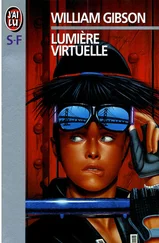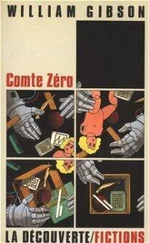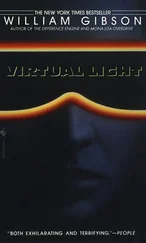But we don’t reflect them back. We don’t have any equivalent of the robot sushi bar in Harvey Nichols, which is as perfectly “Japanese” a thing as I’ve seen anywhere, and which probably wouldn’t look nearly as cool if it had been built in Tokyo or Osaka.
We don’t have branches of Muji interspersed between our Starbucks (although I wish we did, because I’m running out of their excellent toothpaste). Muji is the perfect example of the sort of thing I’m thinking of, because it calls up a wonderful Japan that doesn’t really exist. A Japan of the mind, where even toenail clippers and plastic coat hangers possess a Zen purity: functional, minimal, reasonably priced. I would very much like to visit the Japan that Muji evokes. I would vacation there and attain a new serenity, smooth and translucent, in perfect counterpoint to natural fabrics and unbleached cardboard. My toiletries would pretend to be nothing more than what they are, and neither would I. (If Mujiland exists anywhere, it’s probably not in Japan. If anywhere, it may actually be here, in London.)
Because we don’t reflect them back, in Vancouver, they don’t market to us in the same way they market to you.
The trendy watch chains of London are the only places in the world, aside from Japan, where one can purchase the almost-very-latest Japan-only product from Casio and Seiko.
Because Japanese manufacturers know that you see them, in London. They know that you get it. They know that you are a market.
I like to watch the Japanese in Portobello Market. Some are there for the crowd, sightseeing, but others are there on specific, narrow-bandwidth, obsessional missions, hunting British military watches or Victorian corkscrews or Dinky Toys or Bakelite napkin rings. The dealers’ eyes still brighten at the sight of a tight shoal of Japanese, significantly sans cameras, sweeping determinedly in with a translator in tow. A legacy from the affluent days of the bubble, perhaps, but still the Japanese are likely to buy, should they spot that one particular object of otaku desire. Not an impulse buy, but the snapping of a trap set long ago, with great deliberation.
The otaku , the passionate obsessive, the information age’s embodiment of the connoisseur, more concerned with the accumulation of data than of objects, seems a natural crossover figure in today’s interface of British and Japanese cultures. I see it in the eyes of the Portobello dealers, and in the eyes of the Japanese collectors: a perfectly calm train-spotter frenzy, murderous and sublime. Understanding otaku -hood, I think, is one of the keys to understanding the culture of the Web. There is something profoundly postnational about it, extra-geographic. We are all curators, in the postmodern world, whether we want to be or not.
The Japanese are great appreciators of what they call “secret brands,” and in this too they share something with the British. There is a similar fascination with detail, with cataloging, with distinguishing one thing from another. Both cultures are singularly adroit at reconceptualizing foreign product, at absorbing it and making it their own.
Why Japan, then? Because they live in the future, but neither yours nor mine, and somehow make it seem either interesting or comical or really interestingly dreadful. Because they are capable of naming an après-sport drink Your Water. Because they build museum-grade reproductions of the MA-1 flight jacket that require prospective owners to be on waiting lists for several years before one even has a chance of possibly, one day, owning the jacket. Because they can say to you, with absolute seriousness, believing that it means something, “I like your lifestyle!”
Because they are Japanese, and you are British, and I am American (or possibly Canadian, by this point).
And I like both your lifestyles.
Enjoy one another!

This is still the closest I’ve gotten to explaining why Japan fascinates me.
I actually feel I shouldn’t have to. It’s like being asked to explain why London fascinates me. Who asks a question like that?
Were Japanese girls the first power texters? They were the first I encountered.
I saw my first fax machine in Tokyo. Katsuhiro Otomo had several in his house, when he was making Akira. Joi Ito and his friends, in Tokyo, were the first people I saw using those tiny little newfangled cellphones to coordinate smoothly frenetic urban evenings. A fashionably dressed man in Floral Street, outside Paul Smith, was the first headset-equipped cellphone user I ever mistook for a talkative madman.
Thus is the future distributed.


WHEN I WAS A YOUNG MAN, traversing the Seventies in whatever post-hippie, preslacker mode I could manage, I made a substantial part of my living, such as it was, in a myriad of minuscule supply-and-demand gaps that have now largely closed. I was what antique dealers call a “picker,” a semi-savvy haunter of Salvation Army thrift shops, from which I would extract objects of obscure desire that I knew were upmarketable to specialist dealers, who sold in turn to collectors. To this day I am often unable to resist a professionally quick, carefully dispassionate scan over the contents of any thrift shop, though I almost never buy anything there. Mainly because the cut-rate treasures, the “scores” of legend, are long gone. The market has been rationalized. We have become a nation, a world, of pickers.
There are several reasons for this. One has to do with boomer demographics and the cult of nostalgia. There are now more fiftysomethings than there are primo childhood artifacts of a similar vintage. Most of our toys, unlike the wood and pot-metal of yore, were extrusion-molded ephemera, fragile styrene simulacra, highly unlikely to survive the random insults of time. A great deal of the boomer’s remembered world has been melted down, or crushed into unreadable fragments in forgotten strata of landfill. What remains, particularly if it’s “mint in box,” becomes increasingly rarefied.
Another reason, and this one is more mysterious, has to do with an ongoing democratization of connoisseurship, in which curatorial privilege is available at every level of society. Whether one collects Warhol prints or Beanie Babies becomes, well, a matter of taste.
The idea of the Collectible is everywhere today, and sometimes strikes me as some desperate instinctive reconfiguring of the postindustrial flow, some basic mammalian response to the bewildering flood of sheer stuff we produce.
But the main driving force in the tidying of the world’s attic, the drying up of random, “innocent” sources of rarities, is information technology. We are mapping literally everything, from the human genome to Jaeger two-register chronographs, and our search engines grind increasingly fine.
“Surely you haven’t been bitten by the eBay bug,” said my publishing friend Patrick. We were in the lobby of a particularly bland hotel somewhere within the confines of a New England technology park, and I was in fact feeling twinges of withdrawal.
eBay, which bills itself as Your Personal Trading Community TM, is a site that hosts well over 800,000 online auctions per day, in 1,086 categories. eBay gets around 140 million hits per week, and, for the previous few months, a certain number of those hits had been from me.
Читать дальше












